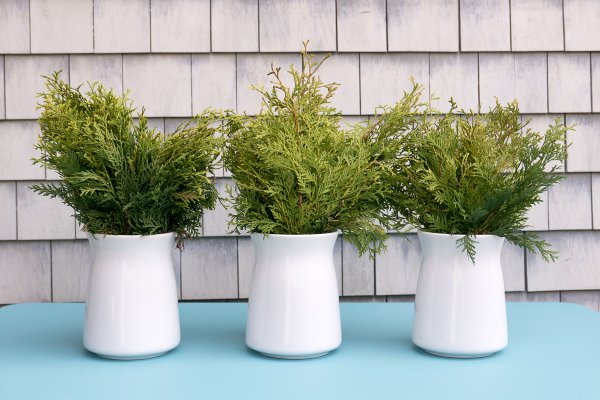Did you know Northern White Cedar is a cure for scurvy? Random facts about our favorite tree
Fun Stuff | 3 years ago

CedarWorks exclusively uses Northern White Cedar, a tree species native to the northeastern U.S. and Canada, for our outdoor playsets because it is the only wood that is both naturally splinter-free and naturally long-lasting without requiring paints, stains or other chemical treatments. It is also produced in dimensions up to 33% larger than competing wood species, and it naturally resists rot and insect damage as it produces substances that protect it from predators such as wood-destroying fungi and termites.
So Northern White Cedar is perfect for outdoor play, but it has a lot of other uses as well, and it has been culturally, economically, and ecologically significant in the US and Canada for centuries.
We are pretty enthusiastic about Northern White Cedar, so in its honor, we’ve done a little research and come up with several random facts about our favorite tree:
It is native to Canada and the Northeastern US
Its scientific name is Thuja Occidentalis
It is also known as Arbor Vitae which translates to “tree of life”. The name “tree of life” was given by the native Wabanakis and Iroquois who first inhabited the Northeastern U.S and Southeast Canada because of its many medicinal, spiritual, and practical uses.
High in Vitamin C, Northern White Cedar was often used to treat scurvy before anyone knew what scurvy was - an illness caused by Vitamin C deficiency. Northern White Cedar is also valuable for its essential oils, which are considered to be therapeutic.
Members of the Iroquois Tribe made a tea of the bark and twigs from Northern White Cedar. They gave this tea to French explorer Jacques Cartier in 1535 when his ships were trapped in the ice for the winter, and his crew was mysteriously getting ill and dying. It saved his crew from what is now understood to be scurvy.
Cartier brought Northern White Cedar with him when he returned to France. It was the first North American tree to be brought back to Europe.
Thoreau later mentioned the cedar tea in his book, The Maine Woods, but he basically thought it was gross and described it as “medicinal” (apparently it really was pretty bad. Most of Cartier's crew initially refused to drink it, too). In fact, Northern White Cedar can be poisonous. These days, it’s better to get your vitamin C from other sources.
Northern White Cedar was used for many other things by different tribes. It historically provided rope, sturgeon spears, arrow shafts, healing poultices, canoes and tinder for starting fires.
Due to its rot resistant characteristics, Northern White Cedar has long been used for products that come in contact with water and dirt: fence posts, shingles, canoes, flagpoles, and even piping. Many old colonial houses and cities may still have cedar piping running through their basements and under their cobblestone streets.
Northern White Cedar is naturally splinter-free because the wood fibers are short and soft enough that they bend and give way when touched.
The bark on a Northern White Cedar tree spirals to the right on the tree for its first 75-125 years of growth, then it switches and spirals to the left.
NWC is the most significant tree for deer. White-cedar stands with high, mostly closed canopies provide protection from deep snow in the winter, as well as an important food source.
Perhaps most importantly, NWC is used to make some of the coolest playsets you can buy.
NCBI The National Center for Biotechnology Information
#fun#useless-information
#outdoor